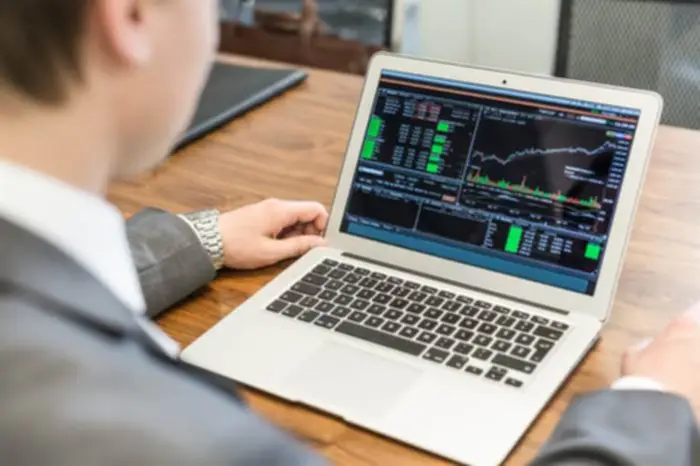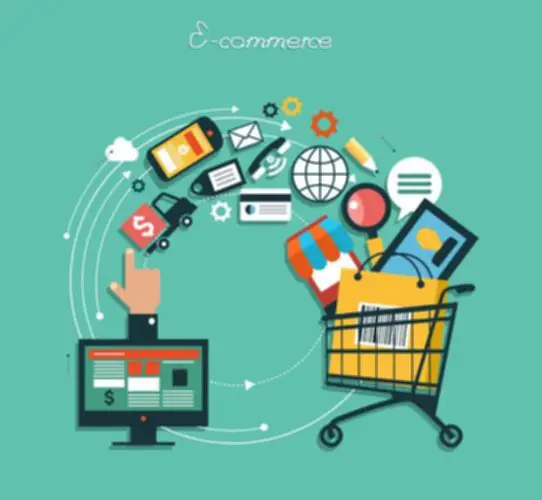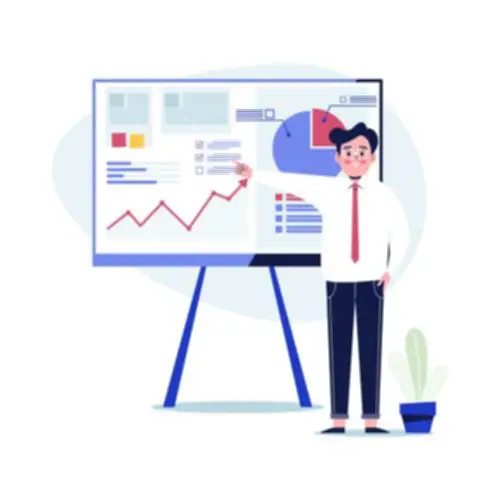Creating a trading platform: A complete guide to the development of modern trading platforms in 2021

Since the beginning of the lockdown, the number of active online buyers has increased significantly. In 2019, there were almost 2 billion online shoppers. Now, the numbers are even bigger.

The e-trading industry got a lot of benefits from this. Brokerage companies started to update their online trading software and implement new features.
We shall cover the main issues regarding trading software development.
Types of trading platforms
First, we must cover the types of trading platforms, so you can see what options there are. From a general point of view, there are two variants.

We are confident that we have what it takes to help you get your platform from the idea throughout design and development phases, all the way to successful deployment in a production environment!
A platform for traditional assets
This is the good old classic choice where traders can invest in:
- Stocks
- Bonds
- Fiat currencies
- ETFs
- Metals, and others.
In most cases, such platforms include a huge variety of assets to work with and cover different financial sectors.
A platform for cryptocurrencies
The second option, a crypto trading platform, is used to work with currencies like:
- Bitcoin
- Ethereum
- Litecoin
- Doge, and others.
There are hundreds of cryptocurrencies available, and they are all gathered within one platform.
Cryptocurrency trading platforms have two subdivisions that determine their market model.
- CEXSpeaking of the global industry, CEX gets the greatest trading volume. All the transactions are performed with the help of a broker that acts as a mediator and charges specified fees for the services.
- DEXWhile DEX is less popular, it is a great choice for users who prefer anonymous transactions without middlemen. It is possible to trade directly, making DEXs peer-to-peer platforms. Their major drawbacks include decreased speed and liquidity, although both are covered by transparency, security, and anonymity.
What are the roles in a trading platform?
There may only be two user roles in any trading platform.
Trader
A trader is basically the client of the service. The trader profits (or doesn’t) from buying & selling financial assets through the platform.
Broker
A broker is a person or company that arranges the transactions between the trader and the other side of the deal which may involve another user, company, or the brokers themselves.
Features that must be available
It is necessary that your software has all the must-have features that make the platform secure, fast, and usable. Otherwise, people will move on to your competitors because of the slightest issue that could irritate them.
Top-notch security
Any fintech software is obliged to have the best security measures. This is an area with huge risks, so any hacks are unforgivable.The best way to make your application secure is by implementing a multi-factor authentication feature. Use this check-list for the best result:
- Unique username.
- Strong password with numbers, lower and uppercase symbols.
- Secret questions.
- SMS, email, phone number confirmation.
- Biometrics.
- Location.
If all these options are present, our congratulations. Your application seems to be secure enough, and it won’t be easily hacked.
A customizable and informative dashboard
Users must have the possibility to customize their dashboards in terms of information, visuals, tools, and other details. It is necessary that a quick glance on the dashboard explains what’s going on in the economic world.
Filters
It is necessary that there is a feature that lets users sort out all the information they want. This will simplify data tracking, asset search, and other stuff.
A search bar
While this is pretty basic, many developers forget even the most crucial features. Having a search bar that lets users look up any information or feature simplifies things a lot. Also, it boosts the user experience a lot.
News
It is not a secret that news affects the prices of various assets a lot. Traders regularly check their newsfeeds for details that might predict future price changes.
A watchlist
This feature is used to monitor several assets to see whether they meet the requirements specified by a trader. It is a great tool for additional analysis and price monitoring.
A portfolio
This option is used to keep all the investments in one place. The tab should include charts, lists, and other stuff that helps represent information in a proper manner.
What OS will you use?
In addition to the features mentioned above, you must also determine the operating systems on which your software will work. The choices are not that different:
- Windows
- macOS
- iOS
- Android.
These are the four major operating systems. Yes, both desktop and mobile options are included. The more OS you cover, the broader your audience will be.
What must be considered when building a trading platform?
So how to build a trading platform and what to use? There are several other points that must be generally considered when building any kind of software. We’ll cover them below.
Design
UI and UX design are very important if you want people to use your software for a long time. Design isn’t just about adding the fancy buttons and making a good look, it also involves making the application usable and comfortable for the audience. Therefore, it is crucial that a harmonious and user-friendly interface is created.
Frontend
The frontend part covers everything that is seen by a user. It includes the animation, pictures, and everything else. A good front-end developer is needed to create the best solution.
Backend
The backend part covers the processes that are not seen by the user. This involves communication with the server, database usage, and other details. Also, the backend part covers the performance of your application.
Testing
Perform regular tests to make sure the software works properly. Fintech is an area that is full of risks, so the smallest glitch might significantly affect someone’s profits.

Top Articles
Container vs VM (Virtual Machines): How Do They Differ?
I am here to help you!
Explore the possibility to hire a dedicated R&D team that helps your company to scale product development.






